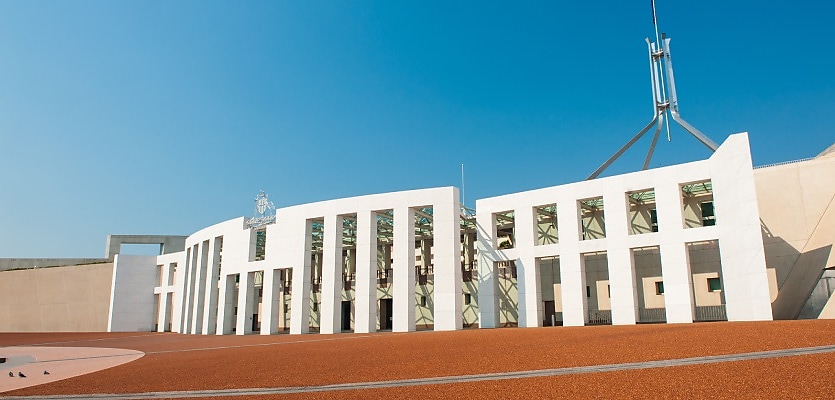While it failed to hit the mark among Australian residential property sector stakeholders, the budget, handed down early last week (9 May), could incite increased investment in the Australian commercial sector, according to experts from Colliers.
The federal government’s decision to introduce a “competitive income tax associated with foreign investment” by halving the withholding tax rate from 30 per cent to 15 per cent for eligible build-to-rent (BTR) projects for income earned from managed investment trusts, according to Colliers’ national director for BTR and residential, Robert Papaleo.
He commented that the budget’s doubling down on a recent National Cabinet commitment to expand the First Home Guarantee Scheme and the Regional First Home Buyer Guarantee will open doors for joint applications to both schemes, and will “enable more market entrants and provide support for those seeking properties experiencing higher demand.”
More broadly, several other commercial asset classes could experience an increase in investment interest off the back of momentum inspired by certain budget schemes according to Colliers’ head of healthcare and retirement living transaction services, Ian Sanders.
“While we saw a shift in cap rates for premium hospital and healthcare assets from 4 per cent to the mid-4 to 5 per cent range over Q1 2022 due to broader market fluctuations, the budget allocation and strong reputation of Australia’s healthcare sector will drive investment flows when interest rates moderate mid-year,” he said.
Mr Sanders welcomed budget support for the national aged care sector, before adding a moderation in interest rates will “also likely prove most powerful in supporting both aged care and specialist disability accommodation.”
He noted that top-tier operators have begun experiencing a movement of cap rates by 25 basis points (bps) and 75 bps, respectively, over the first quarter of the year.
Moving forward, Australia’s ageing population will see an increased demand for aged care facilities. Mr Sanders said, “Asset owners are facing crucial strategic decisions, with several choosing to future-proof by consolidating and enhancing scale.”
“While cap rates for land lease communities currently range from 4.5 per cent to 5 per cent, this remains the most resilient home and retirement living asset class, which is tightly held due to multiple income streams and strong demand at value-driven price points,” he said.
On the industrial and logistics front, Colliers noted the budget is conservative in comparison to recent years, with the government announcing a review of its Infrastructure Investment Program.
“We continued to witness soaring demand for industrial assets, with the highest performing market nationally — Western Sydney — experiencing land take-up by occupiers 54 per cent above the five-year average, establishing a record at almost 290 hectares last year,” explained Collier’s head of industrial capital markets, Gavin Bishop.
He added that the defence, energy, and renewables sectors are set to outperform this year, aided by increased population growth amidst other key fundamental drivers.
Cameron Williams, the network’s managing director of office leasing, said the sector’s current ESG trend will be boosted by the budget’s emphasis on sustainability and the introduction of increased energy ratings required for managed investment trusts.
“ESG increasingly wields influence over lease budgeting decisions, with occupiers now seeking offices with a lower carbon footprint due to development in addition to lower operational carbon during their tenancy,” he shared.
The office sector has seen a shift towards greater emphasis on employee experience and ESG over headcount to space ratios, Mr Williams explained, adding this trend is “ensuring greater rental recovery for higher quality assets in coveted locations.” It’s most notable throughout the nation’s CBDs, where average premium net face rents achieved 2 per cent growth over Q1 2023.
Moreover, the national retail property sector can breathe collective sighs of relief after the budget failed to amend the stage three tax income legislation, stated Colliers’ managing director of retail capital markets, Lachlan MacGillivray.
The managing director outlined this means that, from 1 July 2024, more than 95 per cent of taxpayers will pay a marginal tax rate of 30 per cent or less.
“There is significant potential for a tax concession of roughly 50 per cent to flow through to the retail sector,” he said.
All in all, Colliers’ stance is the first full-year budget delivered by the Albanese government boosts Australia’s strong economic platform.
The network’s national director of research, Joanne Henderson, concluded:
“The Australian property sector presents greater growth potential globally, due to our ability to weather market fluctuations, ensuring values and pricing certainty attract increased investment when interest rates are due to moderate mid-year.”
For REB’s budget coverage, click here, and to see the residential sector’s reaction, click here.

Never miss a beat with
Stay across what’s happening in the Australian commercial property market by signing up to receive industry-specific news and policy alerts, agency updates, and insights from reb.
Subscribe to reb Commercial:







You are not authorised to post comments.
Comments will undergo moderation before they get published.